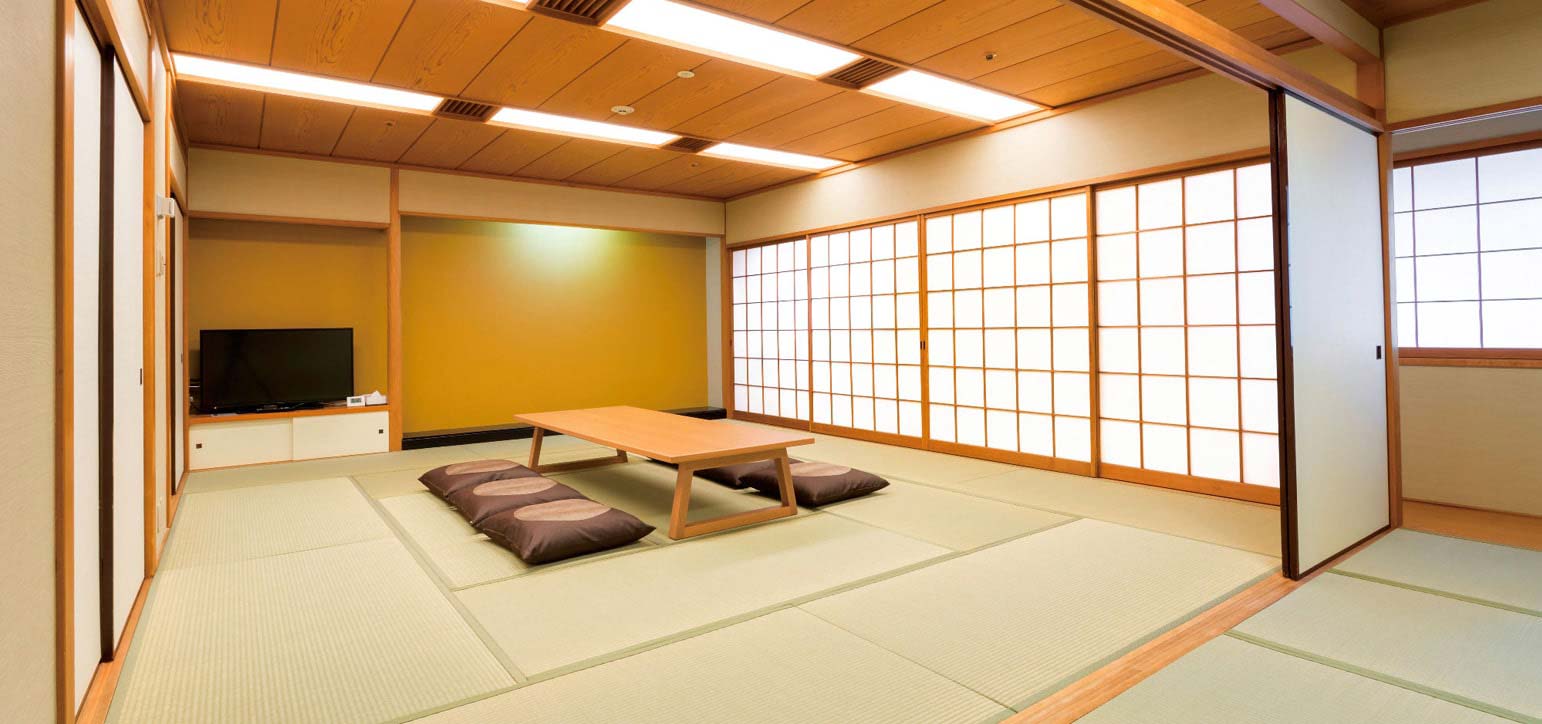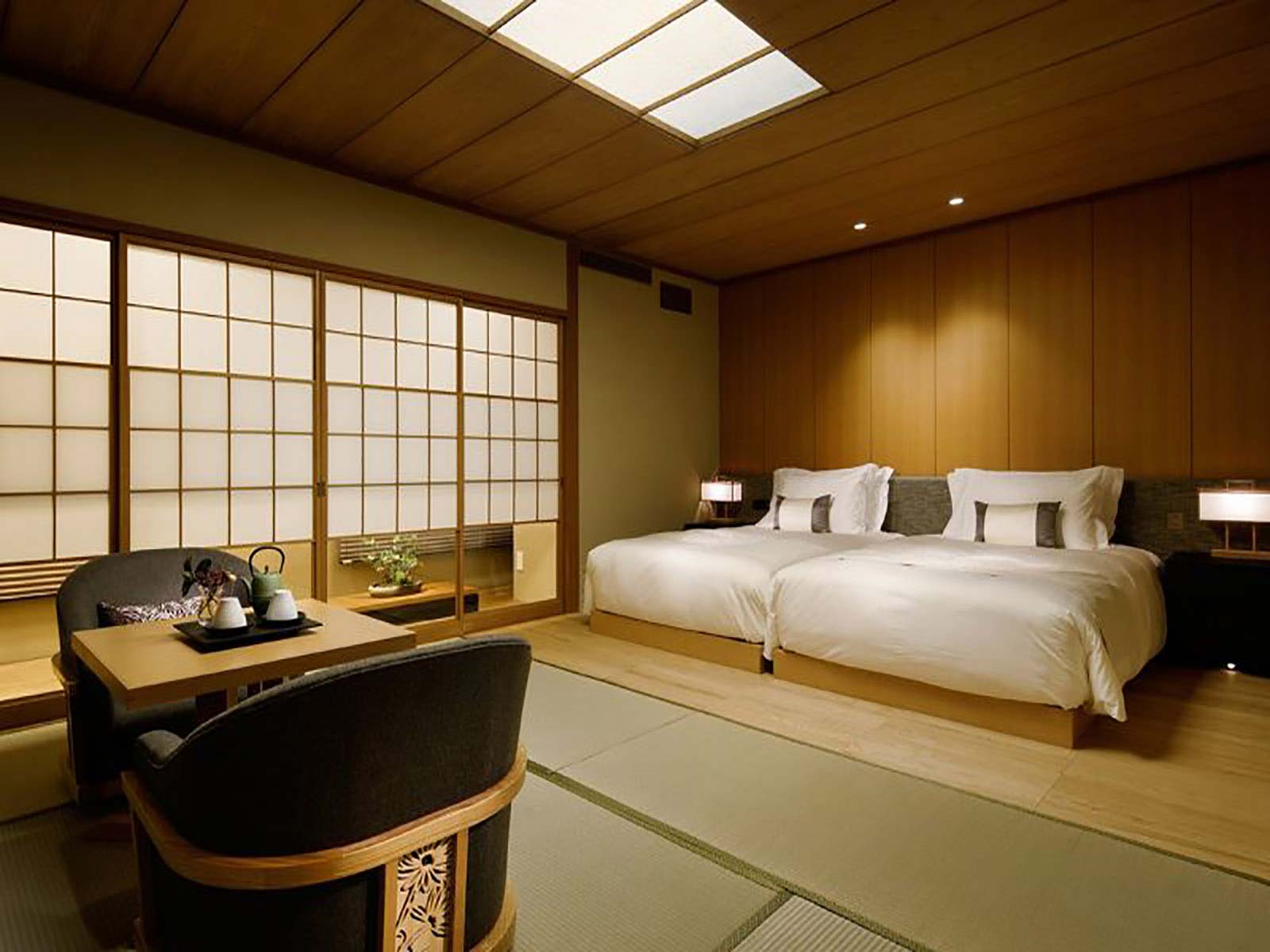The Enduring Appeal of Tatami rooms in Japanese Hotels
The gentle scent of woven rush grass, the soft, yielding feel underfoot, and the calming ambiance – these are the hallmarks of a traditional Japanese tatami room. For centuries, tatami has been an integral part of Japanese architecture and culture, offering a unique and comforting experience. While modern hotels often favor Western-style accommodations, many establishments, particularly in traditional areas, continue to offer the distinct charm of tatami rooms. This article explores the history, characteristics, benefits, and etiquette associated with these unique spaces, offering a glimpse into the enduring appeal of tatami in the context of Japanese hospitality.
A Brief History of Tatami
Tatami mats, crafted from woven rush grass (igusa), have a long and rich history in Japan. Originally a luxury item reserved for the aristocracy, they gradually became more widespread, eventually becoming a standard feature in Japanese homes and, of course, traditional inns and hotels. The size and arrangement of tatami mats are not arbitrary; they adhere to specific regional standards and even influence the dimensions of the room itself. This modular system, known as tatami-wari, ensures a harmonious and balanced space.

Characteristics of a Tatami Room
Beyond the distinctive flooring, a traditional tatami room often incorporates other elements that contribute to its serene atmosphere.
Shoji Screens
These translucent paper screens, framed in wood, allow soft light to filter through, creating a warm and inviting ambiance. They also provide privacy while maintaining a connection to the outside world.
Fusuma Doors
These sliding doors, often adorned with painted or printed designs, separate rooms and can be easily opened or closed to adjust the layout of the space.
Tokonoma Alcove

This slightly raised alcove serves as a focal point in the room. It’s typically decorated with a hanging scroll (kakemono) and a seasonal flower arrangement (ikebana), reflecting the beauty of nature and the changing seasons.
Low Furniture
Tatami rooms are designed for a floor-sitting lifestyle. Low tables, cushions (zabuton), and floor chairs (zaisu) are common furnishings, encouraging a sense of closeness and connection to the ground.
The Benefits of Staying in a Tatami Room
Choosing a tatami room for your stay in Japan offers several distinct advantages.
Immersion in Japanese Culture
Staying in a tatami room provides a unique opportunity to experience traditional Japanese living firsthand. It’s a chance to connect with the culture on a deeper level and appreciate the beauty of simplicity and natural materials.
Relaxation and Comfort
The soft and yielding texture of tatami creates a comfortable and relaxing environment. The subtle fragrance of the rush grass is known to have a calming effect, promoting restful sleep.
Connection to Nature
Tatami mats are made from natural materials, bringing a touch of nature indoors. This connection to the natural world contributes to the peaceful and serene atmosphere of the room.
Temperature Regulation
Tatami has natural insulating properties, helping to regulate the temperature of the room. It keeps the room cool in the summer and warm in the winter.
Etiquette in a Tatami Room
There are certain customs and etiquette to observe when staying in a tatami room.
Removing Shoes
It’s customary to remove your shoes before entering a tatami room. Slippers are often provided for use within the room, but it’s important to remove these as well before stepping onto the tatami itself.
Avoiding Stepping on the Tatami Edges
The edges of the tatami mats, known as heri, are considered delicate and should be avoided. It’s customary to walk on the tatami itself, not the edges.
Respecting the Tokonoma
The tokonoma is a special area of the room and should be treated with respect. Avoid placing luggage or other belongings in the alcove.
Maintaining Cleanliness
It’s important to keep the tatami room clean and tidy. Avoid eating or drinking directly on the tatami mats, as spills can be difficult to clean.
Tatami Rooms in Modern Hotels
While traditional ryokans (Japanese inns) are most likely to offer tatami rooms, some modern hotels also incorporate them into their design, often as a way to offer guests a taste of traditional Japanese culture. These modern interpretations may combine traditional elements with contemporary amenities, providing a comfortable and convenient experience.
Hybrid Styles
Some hotels offer rooms with a portion of the floor covered in tatami, while the rest features Western-style flooring. This allows guests to experience the feel of tatami without committing to a fully traditional room.
Modern Amenities
Even in traditional-style tatami rooms, modern hotels often provide amenities such as comfortable bedding (often on a raised platform rather than directly on the floor), private bathrooms, and Wi-Fi access.
Location and Accessibility
Tatami rooms are not limited to rural areas. You can find them in hotels in major cities as well, offering a tranquil retreat from the bustling urban environment.
The Future of Tatami
Despite the rise of Western-style accommodations, tatami rooms continue to hold a special place in Japanese culture and hospitality. Their enduring appeal lies in their ability to evoke a sense of peace, tranquility, and connection to tradition. As more travelers seek authentic cultural experiences, the demand for tatami rooms is likely to remain strong, ensuring that this unique aspect of Japanese heritage continues to thrive.
Experiencing the Unique Charm of Tatami
Staying in a tatami room offers a truly immersive and unforgettable experience. From the moment you step onto the soft, yielding surface of the tatami mats, you’ll be transported to a world of tranquility and tradition. Whether you’re seeking a deep connection to Japanese culture or simply a peaceful and relaxing retreat, a tatami room is the perfect choice for an authentic and memorable stay. It’s a chance to slow down, appreciate the simple things, and experience the unique charm of traditional Japanese hospitality.
